Climate-Smart Forestry
Around the world, communities depend on forests. Climate-smart forestry is a set of practices that helps forests stay healthy and thriving in a changing climate.
Embracing Nature, Empowering the Planet

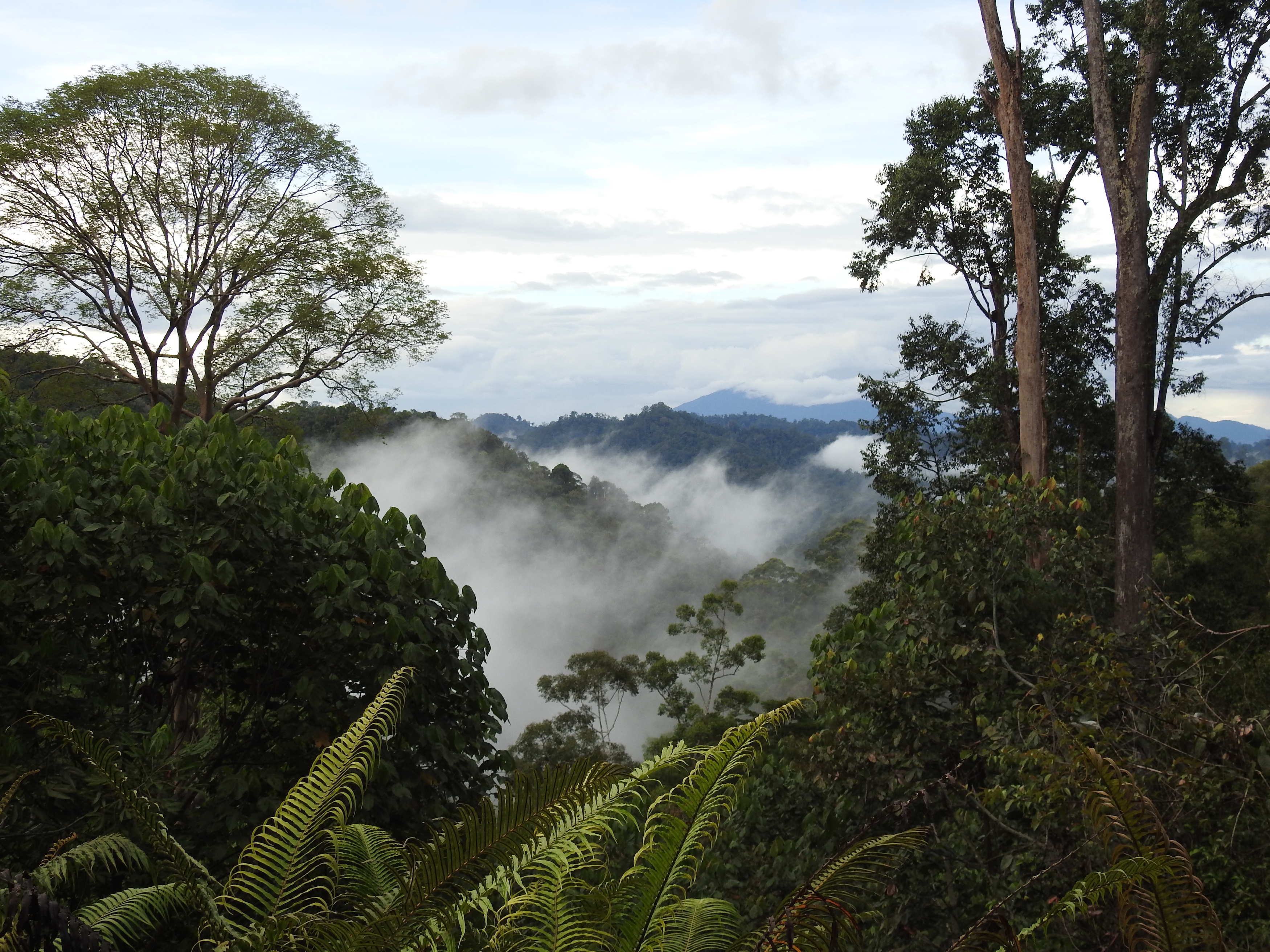
are actions to protect, better manage and restore nature to reduce greenhouse gas emissions and store carbon.
Science led by TNC shows that—combined with cutting fossil-fuel use and accelerating renewable energy— these solutions for climate change can help us avoid the worst impacts of the climate crisis. Around the world, communities are working together on these nature-based solutions by protecting, better managing and restoring nature in ways that reduce greenhouse gas emissions and store more carbon.
TNC helps expand these critical efforts through science and partnership. We work with governments, businesses and communities to implement on-the-ground projects that show how nature can make the people and the planet safer. And we conduct cutting-edge science to further our understanding of nature as a climate solution to ensure we’re making the best investments in the most effective strategies.
Sign up for Global Insights Newsletter
Come along each month as we explore the latest real-world solutions to the most complex challenges facing people and the planet today, all in 5 minutes or less.
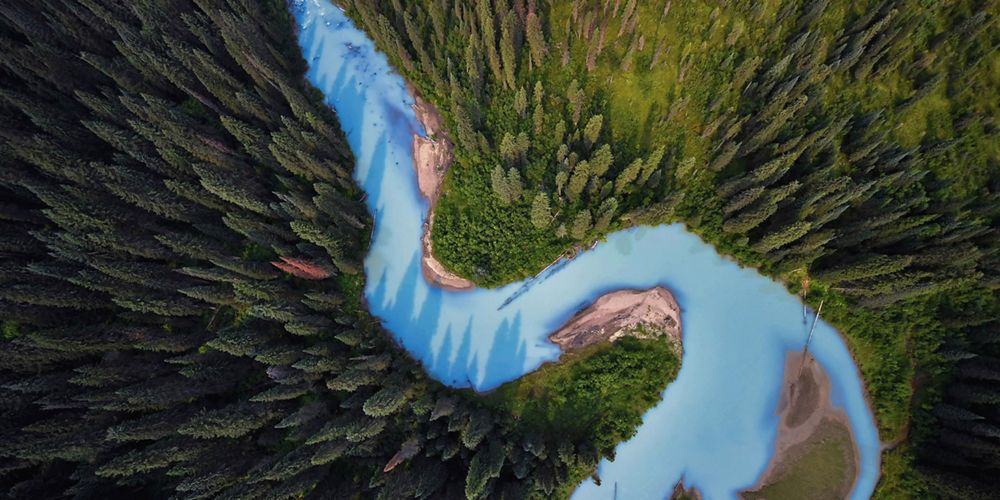
See how farmers in Brazil are planting native trees on agricultural lands in a practice called agroforestry, which provides food security and economic opportunity.
Meet the farmers and scientists in Indonesia and Minnesota, U.S. who are rewetting peatlands to help bring back essential biodiversity and provide clean water.
See how the Family Forest Carbon Program helps private landowners in the United States manage their forests to store more carbon, earn revenue and stay resilient for future generations.
Learn about a project in Papua New Guinea that empowers local women to restore mangrove forests, ensuring food sustainability and making coastlines more resilient.
No results are shown. To see results, turn on the toggle switches in the legend.
Climate-Smart Forestry
To prevent further forest loss, The Nature Conservancy and our partners established the Africa Forest Carbon Catalyst (AFCC), an incubator designed to accelerate the growth of promising carbon projects by supporting them through the complex and costly stages of development and verification to reach the goal of selling carbon offset credits.
Reforestation
When Hurricane Ivan devastated his tree farm, an Alabama farmer turned to the Farm Bill to help restore the land with longleaf pine.
Peatlands
TNC is mapping the largely undocumented peatland ecosystems in the Upper Okavango Basin of Angola. Our goal is to protect this vital carbon sink for climate progress, while supporting local communities and preserving biodiversity.
Reforestation
A new reforestation program pays landowners in the Mississippi Delta region for the environmental benefits that come from restoring forests on their most flood-prone lands.
Blue Carbon
The Nature Conservancy and partners are restoring coastal wetlands in South Australia and building a model of conservation and sustainable financing to protect a million hectares of blue carbon ecosystems.
Climate-Smart Forestry
TNC and partners researched how selectively cutting the liana (woody vines) from trees can improve the health of managed forests around the world—and help mitigate climate change.
Reforestation
Adding native trees to agricultural lands improves biodiversity and farmer livelihoods and can help address the climate crisis at a global scale.
Climate-Smart Forestry
Many Indigenous communities already manage forests in ways that draw from their traditions and values. In many cases, these practices are sequestering more carbon and resulting in improved economic outcomes for communities. Our Canadian affiliate, Nature United, works alongside local communities to support Indigenous-led forest management in British Columbia.
Peatlands
TNC is implementing a 5,000-acre nature-based solutions project that strategically rewets Delta peat soils at Staten Island in California, through a combination of rice cultivation and wetland restoration—practices that reduce GHG emissions, stop and reverse land subsidence, and create high-quality habitat for migratory birds.
Peatlands
In Chile, a partnership with Universidad Bernardo O’Higgins is helping to establish sustainable practices for harvesting sphagnum moss. Together with local communities, the project promotes gender-responsive, sustainable livelihoods that align with long-term conservation goals. Moreover, TNC co-led the development of the Conservation Plan for the Torres del Paine Biosphere Reserve.
Peatlands
In Colombia, TNC researchers conducted a two-year study about Colombia’s paramos (an important type of peatland in the region). Their findings—about how the paramos store carbon and the value to the local economy—will help the country’s government better incorporate peatlands into their NDC as part of the Paris Climate Accord.
Reforestation
Ant Forest has grown to more than 690 million participants, who have planted as many as 475 million trees across China. Behind these impressive numbers is a continuous partnership and support from TNC.
Climate-Smart Forestry
In Southern China, we provide technical assistance to local forest managers and support local authorities in developing and implementing climate-smart forest management plans. TNC also supports forest policy goals by using the best available science to inform China's NDC goals, which heavily emphasize forest as a key ecosystem to combat climate change.
Climate-Smart Forestry
The Congo Basin is the world’s largest carbon sink. TNC is working with local partners including communities, concessions, environmental non-profits and governments in this region to pilot and scale lower-impact forestry methods through RIL-C, which can have a significant impact on global climate and biodiversity outcomes while maintaining positive impacts on local economies.
Climate-Smart Forestry
Cumberland Forest Project spans 253,000 acres in Kentucky, Tennessee and Virginia, in one of the most important areas for climate resiliency in North America. TNC seeks to support local economies through sustainable timber harvesting that utilizes local loggers and mills. A recreational leasing program will provide access for wildlife viewing, fishing, hunting and other activities.
Climate-Smart Forestry
TNC Ecuador is supporting a project that encompasses 117,000 hectares of managed lands belonging to the Kichwa and Shuar Indigenous nationalities in the Napo and Pastaza provinces of the Ecuadorian Amazon.
Climate-Smart Forestry
The Family Forest Carbon Program, a program created by the American Forest Foundation and The Nature Conservancy, supports family forest owners in improving forest health and addressing climate change through practices like selective thinning and gap harvesting.
Reforestation
Today, productive reforestation is becoming a driver of sustainability throughout the Western Highlands of Guatemala. Instead of clearing forests to produce food, our strategy integrates native forests and farms.
Climate-Smart Forestry
Research shows that selectively logged tropical forests can retain up to 80% to 100% of native flora and fauna species, if managed very carefully and logged at a low intensity. If this rate holds true in Berau, then retaining land in logging concessions, instead of converting to oil palm or fiber plantations, could be a major player in conservation.
Peatlands
In Indonesia, our local affiliate, YKAN, is leading science in Kalimantan to demonstrate the value of peatlands in tackling climate change. And they are developing community-led peatland conservation strategies that help lessen fire risks and support sustainable livelihoods like fishing.
Blue Carbon
YKAN, The Nature Conservancy’s affiliate in Indonesia, is supporting environment-friendly shrimp farming practices in mangrove ecosystems through the Shrimp-Carbon Aquaculture (SECURE) approach in East Kalimantan, Indonesia.
Blue Carbon
A project in Kenya aims to secure, manage and restore mangroves and associated ecosystems in Lamu and Tana River Counties for biodiversity conservation, community livelihood and climate benefits
Reforestation
We’re working with partners and applying science and technology to plant the right trees in the right places, including mangroves on Kenya’s North Coast and timber and fruit trees in western Tanzania’s Mahale ecosystem, home to 93% of the country’s endangered chimpanzees.
Climate-Smart Forestry
TNC has been working with local ejido communities and other partners in this region for more than 10 years to implement Reduced Impact Logging for Climate (RIL-C).
Reforestation
We are working to restore these forests, which lose hundreds of thousands of acres yearly due to deforestation.
Climate-Smart Forestry
In Michigan's upper peninsula, TNC promotes sustainable forestry practices, such as selective logging, which involves assessing each individual tree to decide which trees should be cut for the health and diversity of the whole forest.
Reforestation
Reaching our goal of reforesting one million acres in Minnesota would require increasing seedling production about eightfold.
Peatlands
In Minnesota, TNC scientists have developed a “Peatlands Playbook,” which will give conservation practitioners in the state the technical guidance they need to protect healthy peatlands, rewet partially drained peatlands and restore fully drained peatlands.
Climate-Smart Forestry
TNC uses and shares climate-smart forestry practices in the Northwoods of Minnesota that increase the forest's carbon sequestration and storage potential. Tactics include planting climate-resilient species and performing selective harvesting guided by climate science to promote resilient forests.
Peatlands
In Mongolia, TNC works with traditional nomadic livestock herding communities to protect peatlands. These communities are important influencers of sustainable use of peatlands, which are tied to their livelihoods, seasonal grazing and water regulation.
Peatlands
TNC, in collaboration with the New Jersey Department of Environmental Protection, Division of Fish and Wildlife and other partners, has embarked on an effort to improve habitat within the approximately 1,200-acre "Hyper Humus" section of the Paulinskill Wildlife Management Area.
Reforestation
As New York State sets its sights on reforesting 1.7 million acres with 680 million trees by 2040, a challenge has emerged: a significant shortage of seedlings. The Nature Conservancy launched a new initiative to address this bottleneck—a first-of-its-kind nursery incubation program designed to increase seedling production and strengthen the reforestation supply chain.
Peatlands
Despite their benefits, over 90% of New Zealand’s wetlands have been altered through a change in land use. TNC New Zealand is exploring whether peatland restoration projects could access sustainable financing for nature restoration via teal carbon credits.
Peatlands
TNC has restored peatlands across the coastal plain. We are currently working to restore 33,000 acres and protect 10,500 acres of peatlands in NC and VA. We've developed a first-of-its-kind methodology to quantify the emission reductions gained from restoring coastal peatlands, enabling landowners to access market incentives for peatland restoration across the region.
Blue Carbon
TNC is protecting Papua New Guinea's mangroves through a unique partnership with Mangoro Market Meri (meaning Mangroves, Women and Markets), which has linked women-led mangrove conservation to sustainable economic development initiatives.
Peatlands
TNC is working across Patagonia to protect and sustainably manage peatlands. This initiative aims to avoid impacts on 3 million hectares of wetlands and reduce greenhouse gas emissions by up to 15.6 million tons of CO₂ equivalent per year by 2030. The project also seeks to benefit up to 100,000 people, with a strong focus on gender equity, capacity building and community leadership.
Climate-Smart Forestry
TNC is working with the local government in Solomon Islands to complete a feasibility study for a pilot climate-smart forestry project in Barora Fa with plans to scope across the province for other carbon opportunities.
Reforestation
In Texas, TNC’s Southmost Preserve nursery is an opportunity to bring back the iconic Montezuma cypress.
Climate-Smart Forestry
A collaborative conservation effort saved one of the world’s last large swathes of temperate rainforest, avoided the release of more than 500,000 tons of carbon emissions, created a conservation-focused local economy complete with new jobs and opportunities and protected one of the oldest trees on Earth.
Blue Carbon
Since 2008, TNC and partners have broadcast more than 72 million seeds into 600 acres to help accelerate the natural spread of eelgrass, which now covers more than 9,500 acres.
Reforestation
Since 2015, more than 3,000 acres of red spruce habitat has been created in West Virginia, allowing the spruce trees to grow into the forest canopy and begin producing seeds.
In 2017, The Nature Conservancy led a landmark study that showed how natural solutions for climate change designed to protect, better manage and restore forests, grasslands and wetlands could contribute up to a third of the emissions reductions we need to avoid the worst impacts of climate change. The authors developed a framework to distill the evidence into natural climate solutions pathways that demonstrate the full climate potential of nature.
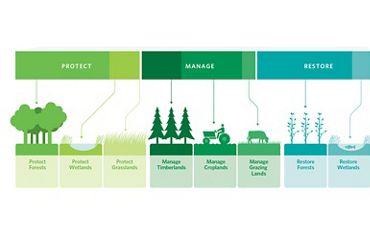
Globally, natural solutions for climate change could deliver up to a third of the emission reductions the world needs by 2030.
Check out our latest thinking and real-world solutions to some of the most complex challenges facing people and the planet today. Get the newsletter.
Our groundbreaking study found that natural climate solutions can provide up to one-third of the mitigation needed by 2030 to keep global temperatures livable.
Since then, TNC scientists and partners have continued investigating how, when and where to invest in natural climate solutions to deliver on the world's most urgent climate goals. Our experts have published more than 50 studies that demonstrate the power of natural climate solutions in the United States, Canada, Indonesia and around the world.
Defining what constitutes real, high-integrity natural climate solutions is critical so we can implement them effectively. These principles provide practical guidance on what constitutes a natural climate solution so that investments can be made with confidence. NCS must be nature-based, sustainable, climate-additional, measurable and equitable.
Principle 1.1: Natural climate solutions result from the human stewardship of ecosystems.
Principle 1.2: Natural climate solutions do not move ecosystems further from their natural state.
Principle 2.1: Natural climate solutions sustain biodiversity.
Principle 2.2: Natural climate solutions sustain food production.
Principle 2.3: Natural climate solutions sustain fiber and wood production.
Principle 2.4: Natural climate solutions sustain climate adaptation services.
Principle 3.1: Natural climate solutions provide additional climate mitigation that would not happen without intervention.
Principle 3.2: Natural climate solutions provide durable mitigation.
Principle 3.3: Natural climate solutions are not used to compensate for emissions that need to be avoided to avoid climate crisis.
Principle 4.1: Natural climate solutions must quantify their climate benefit as consistently and completely as possible.
Principle 4.2: Natural climate solutions accounting is conservative.
Principle 4.3: Natural climate solutions with uncertainty ranges greater than the estimated climate mitigation should be flagged as emerging.
Principle 4.4: Natural climate solutions accounting avoids double counting.
Principle 5.1: Natural climate solutions respect human rights.
Principle 5.2: Natural climate solutions respect Indigenous self-determination.
Groundbreaking research by TNC and 15 other institutions, published in the Proceedings of the National Academy of Sciences. Read key takeaways from the study
Explore our Natural Climate Solutions Resource Center to see the latest science, research and case studies demonstrating how nature can help increase carbon storage and avoid greenhouse gas emissions around the world. See a list of studies about NCS
Natural climate solutions are good for people and nature. Research confirms that strategies to protect, better manage and restore ecosystems not only reduce greenhouse gas emissions, they can also promote biodiversity, provide clean air and water, and make communities more resilient to the impacts of climate change.
The biodiversity and climate crises are linked. Protecting, better managing and restoring critical ecosystems like old-growth forests and coastal wetlands safeguards the places our plants and animals need to survive.
NCS can make habitats and food more available for species. NCS can also improve connectivity between patches of habitat, allowing species to move across landscapes for food and water, seek shelter, or reproduce. Plant species diversity, which is also supported by NCS, ensures the overall health and resilience of ecosystems.

Practices to protect, better manage and restore nature not only store more carbon, they can also enhance ecosystems’ defenses against the impacts of climate change..
When they are developed in an authentic and equitable partnership with Indigenous and traditional communities, natural climate solutions protect against droughts and flooding; provide recreational spaces; and support livelihoods that are increasingly impacted by climate change.
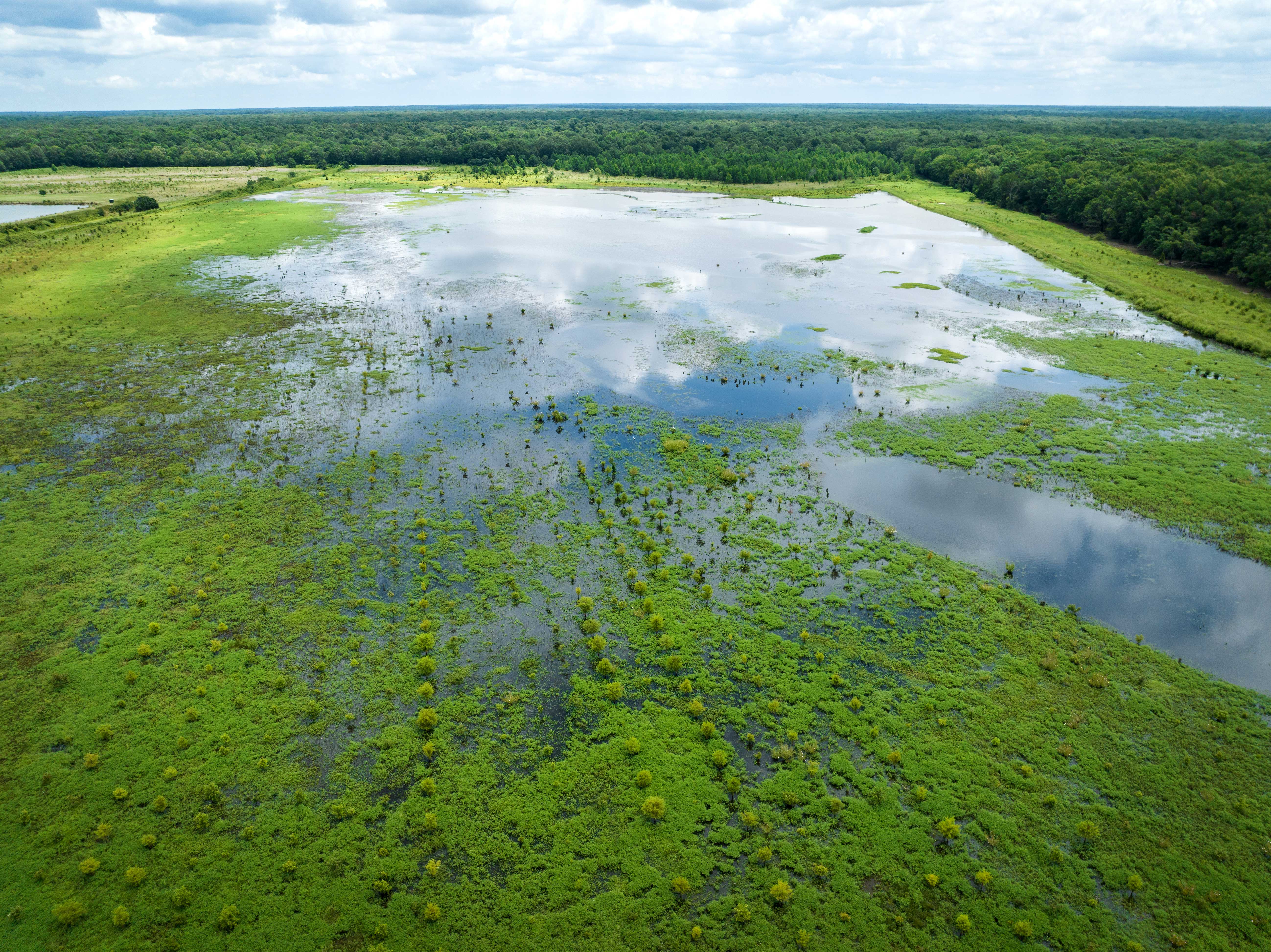
Natural climate solutions provide ecosystem services like encouraging pollination and stabilizing soil for the roots of trees and plants.
They can help with rainwater infiltration, decrease erosion and reduce nitrogen runoff into drinking water. Tree coverage in cities reduces temperatures and provides more shade for people and wildlife.
Read how urban reforestation could reduce heat-related health risks.
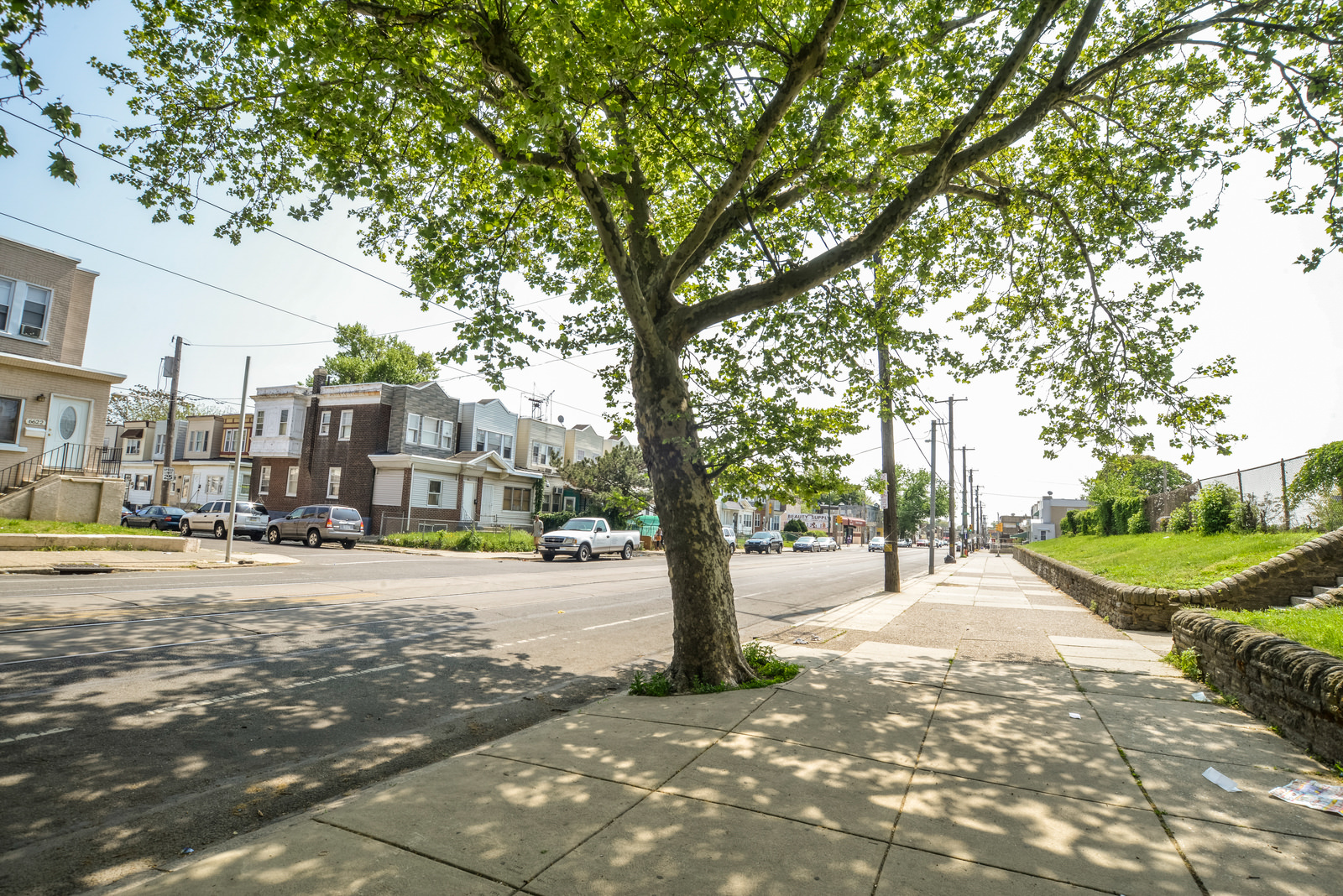
Globally, natural climate solutions could deliver up to a third of the emission reductions needed by 2030 to avoid the worst impacts of climate change.
Nature has been successfully sequestering carbon for millions of years through photosynthesis, the oldest carbon-capture technology on Earth. These solutions are cost-effective — currently available at a lower cost than engineered carbon capture — and they are readily available, helping us address harmful emissions now.
Explore an online tool to see mitigation potential around the world.
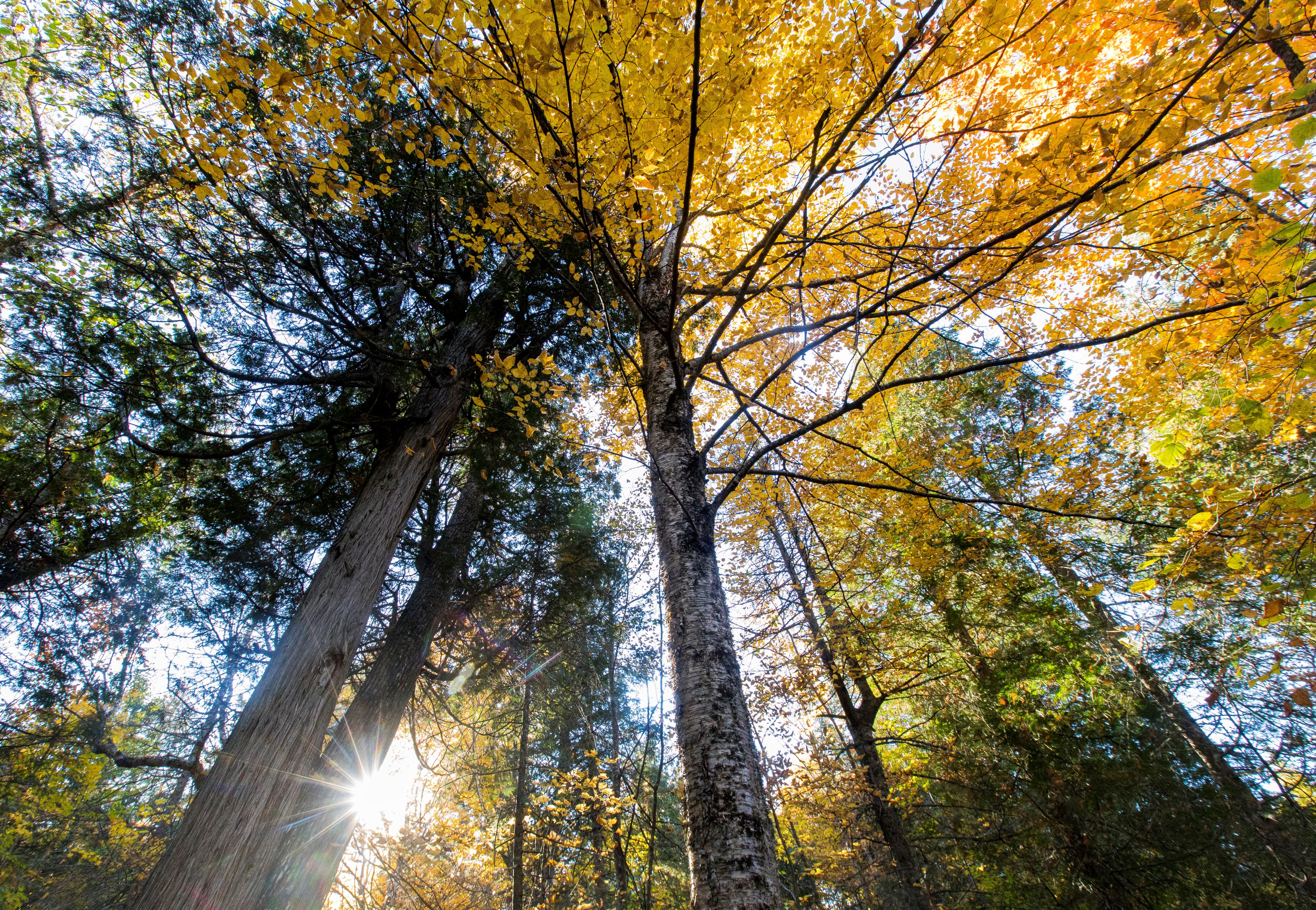
TNC is a leader in NCS science with decades of experience working in partnership with stakeholders and rightsholders around the world.